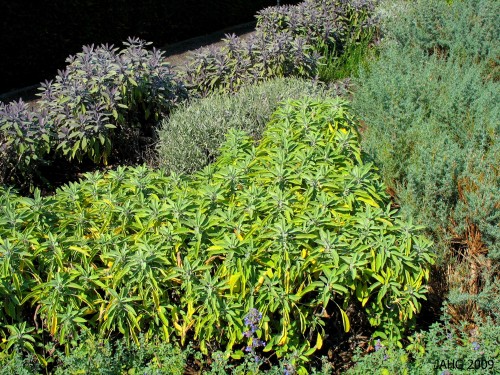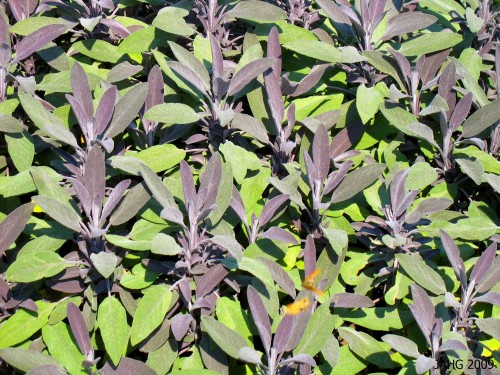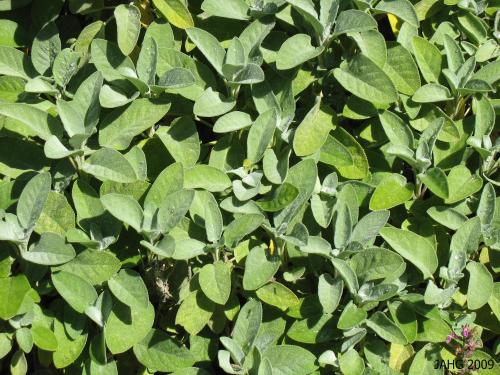The year I went to Horticulture school in Vancouver was unusually warm at Canadian Thanks Giving time and i went home on the train for the long weekend. While I was there I saw that someone had harvested the vegetables which I had planted in the small garden which I had kept. There was zucchini, tomatoes, peppers and cabbage there on the back porch when I got home. During the weekend I decided to walk around the neighborhood and see the gardens with my newly educated eyes and brain. To my surprise I saw some culinary Sage (Salvia officinalis) growing in a back garden. I decided as soon as I could I would give my mom a Sage plant to grow and use in her delicious turkey stuffing. She was so thrilled when she could use fresh Sage the following year.
Sage has long seen as a valuable plant, it’s Latin name ‘Salvia’ means to heal. During the centuries past it has been used in many medicinal ways. It’s best known property is being used to reduce perspiration, this is useful for those persons dealing with night sweats. It is also well known as an astringent which has commonly been used as a gargle for tonsillitis, laryngitis and sore throats. Salvia tea in the past was also prescribed for problems such as nervous conditions, trembling, depression and vertigo. Crushed fresh leaves are used help relieve insect bites.
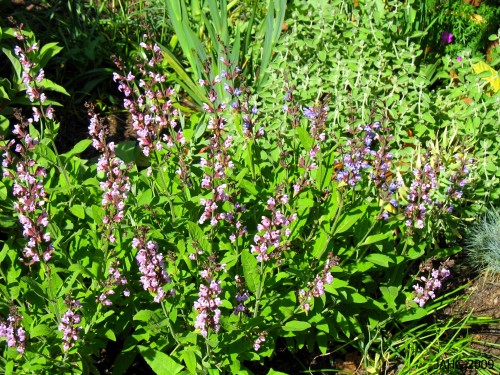
Salvia officinalis 'Rosea' is one flower color variation which makes an attractive addition to a garden.
Sage also has other qualities which were seen to be more important in the past. It was believed to help ward off evil spirits. The quality whhich is most important today is that of it’s ability to flavor savory dishes. The most traditional use at this time of the year is related to it’s use in the Christmas Turkey. Sage imparts a peppery earthy flavor which adds depth to many dishes. It can be used fresh or dried and it often blended with other herbs. It often is used with fatty meats such as duck, goose or pork.
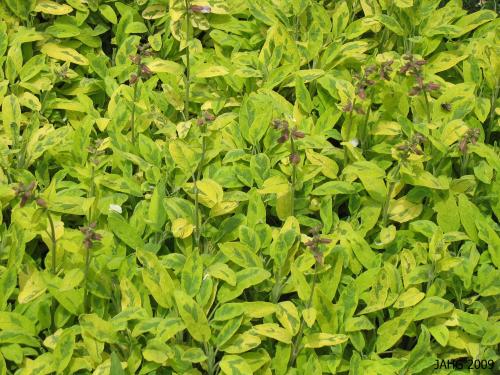
Salvia officinalis 'Icterina' is also known as Golden Sage and is one of the brightest shrubs in the garden.
Savia officinalis is a low shrub which is evergreen, the leaves are unusual in that they are highly aromatic. There is now a fair selection of color forms ranging from the dusky purple of ‘Purpurascens‘ through the traditional ‘sage green’ through to almost yellow forms such as ‘Icertina’ and ‘Aurea’. There are also an attractive wider leaved form called ‘Berggarten’ and a narrow type ‘Lavandulaefolia’. ‘Tricolor’ is a weaker growing form which blends green, white and purple and commonly reverts to green. ‘Alba’ has the grayest foliage and produces attractive white flowers.
Sage is a member of the labiatae (mint) family and has the characteristic square stems and lipped flowers. It is quite hardy for a herb and tolerates zone 4 -30f(-34c). Salvia officinalis grows to about 2ft(60cm) tall and slightly wider. The one thing which it dislikes is winter wet especially if the soil is poorly drained. Sage is best grown in full sun and sharply draining soil that is average in nutrient content. Prune back after flowering. It is a very versatile plant which grows well in many situations such as perennial borders, herb gardens, shrub borders, rock gardens, container plantings and in areas of low watering or in sites which are not easily watered. You can also plant in places where the foliage will be rubbed to give off its scent. Sage is also a butterfly and bee attractant.
Pests do not bother Sage. One disease (Verticillium dahliae) called Verticillium or Sage Wilt will kill the plant. It is important if you have this problem not to replant any Sage in the same place again. When selecting a plant to buy choose the most vigorous plant with the best coloring in the leaves as it can vary. Most forms are now produced by cuttings which easily root. You can grow the plain Salvia officinalis from seed but it will be more leggy compared to others.
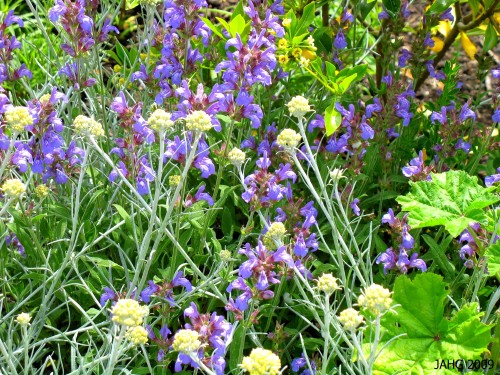
The attractive flowers of Salvia officinalis are quite showy compared to other members of the mint family.
More wise advise on Sage:
My favorite site for all things herb and spice: http://www.uni-graz.at/~katzer/engl/Salv_off.html
Wiki page on Sage: http://en.wikipedia.org/wiki/Salvia_officinalis
